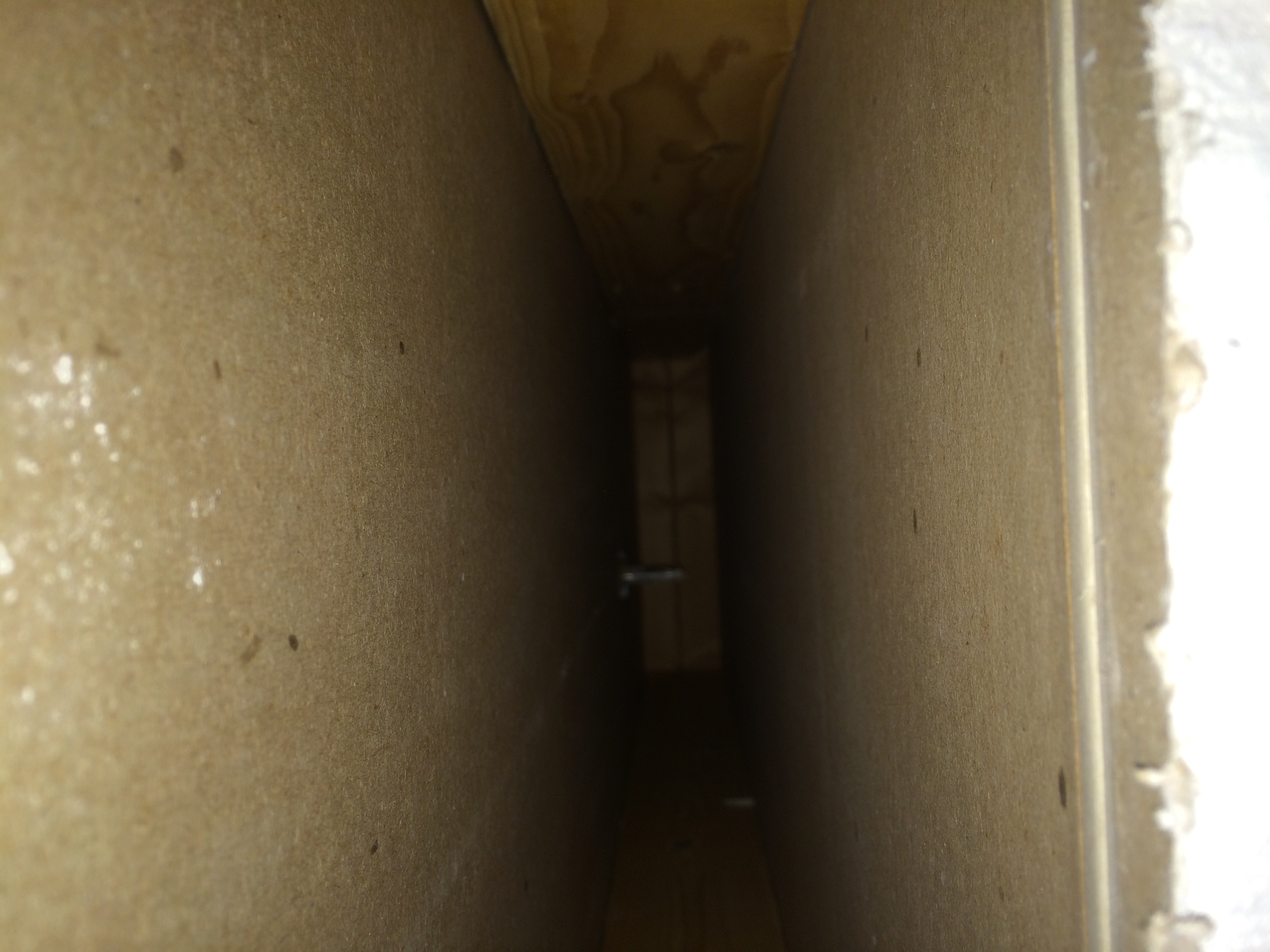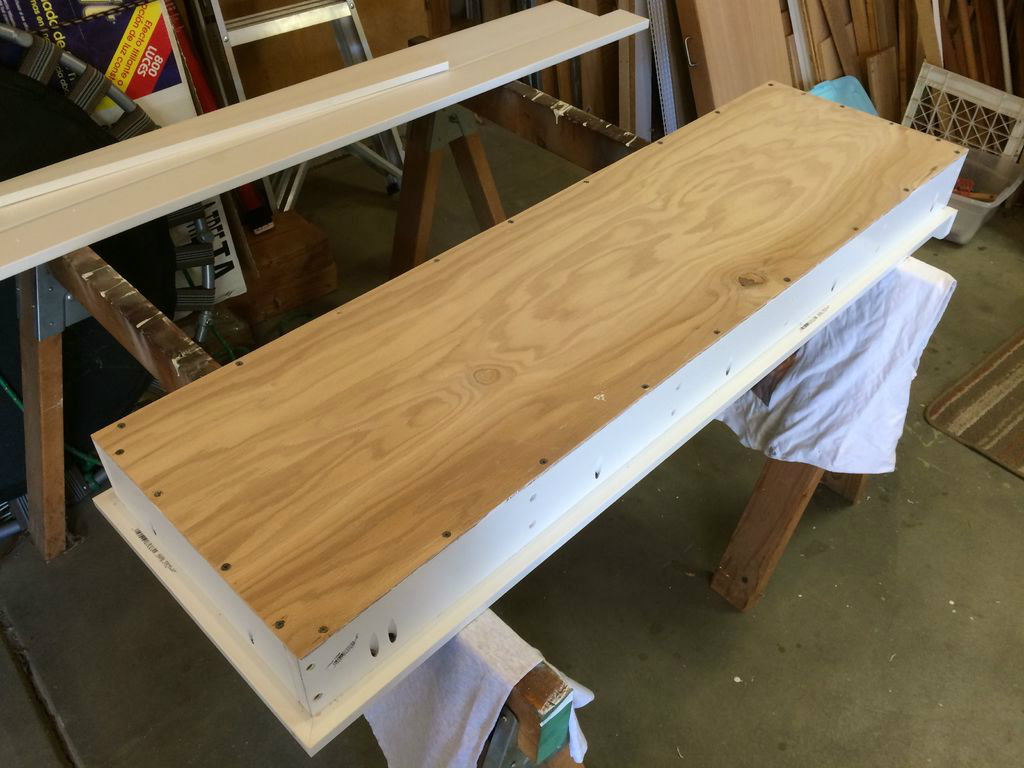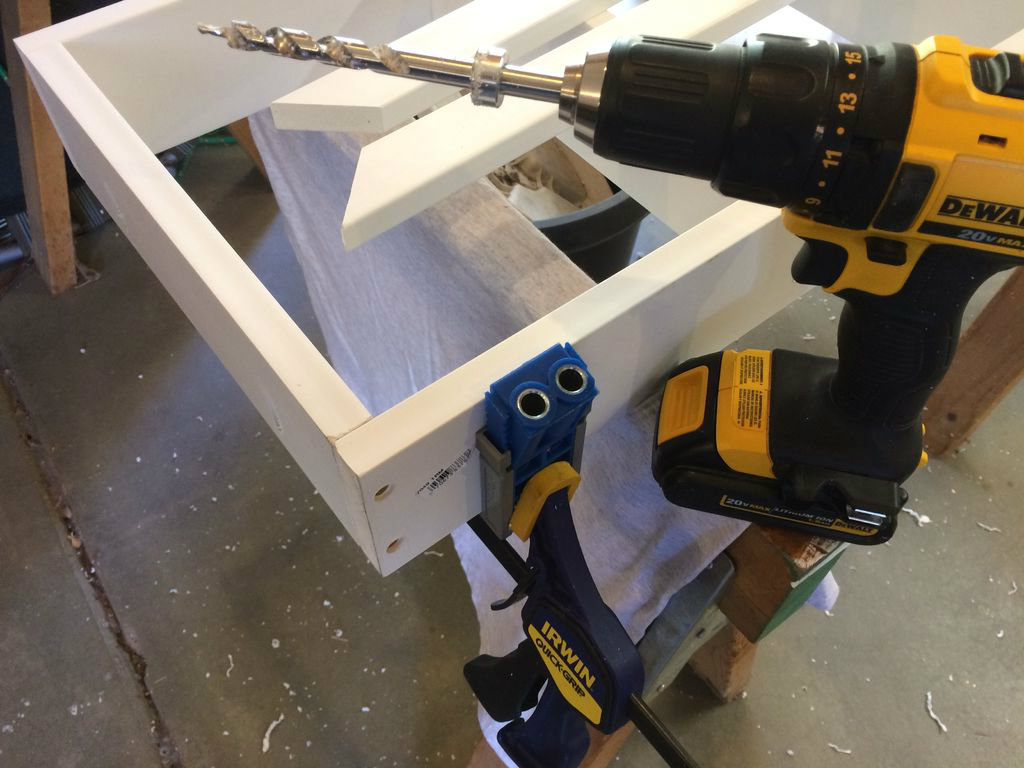Built-in Shelves Between the Studs
by Chris Torrence in Living > Organizing
58867 Views, 416 Favorites, 0 Comments
Built-in Shelves Between the Studs

The upstairs bathroom in our house is tiny. So small that there is nowhere to store spare toilet paper or other bathroom essentials. So I decided to build shelves within the studs. Some quick web searches turned up a few plans, and off I went to the hardware store.
What we're building is a complete shelving unit that will be recessed into the wall between two studs.
Time: One weekend
Cost: About $100 depending upon the choice of wood and the shelf height.
Materials:
- 3/4" PVC Trim Board: 3.5" wide, about 15 linear feet
- 5/8" PVC Trim Board: 1.5" wide, about 10 linear feet
- 3/4" PVC Trim Board: 5.5" wide, about 16 inches long
- 1/4" Oak Plywood: 2 feet by 4 feet
I hate having to paint trim since it takes so many coats, so for this project I decided to try "fake wood" PVC Trim Boards that come already pre-painted. This turned out surprisingly well. My table saw was able to easily cut through the boards without any splintering or melting, the boards were easy to drill into, and the finish was a nice bright glossy white. A bonus (pointed out by James in a comment) is that the PVC will resist moisture much better than wood. The only caveat is that the PVC is soft - you just need to be careful when driving screws to not go too deep.
Between the Studs




Since you'll be mounting the shelving unit between the studs, the first step is to make sure the area is clear of any obstructions like electric wires or pipes. First, use a stud finder (or just bang on the wall) to find the approximate stud location. Then, using a drywall saw, cut a small pilot hole in the middle of the studs about halfway up the wall. Use a flashlight and a compact mirror to look both up and down.
In my case this turned out to be a huge timesaver. Everything between the hole and the floor plate was clear, but looking up towards the ceiling (or top) plate, I spotted a large metal wall anchor (see my blurry picture). This turned out to be holding up the closet rod for our clothes closet. The closet rod was about 70 inches above the floor, so I decided to make the built-in shelving unit be 48 inches tall, extending from 20 inches above the floor up to about 68 inches.
Now cut out the large hold in the drywall, all the way from one stud to the other. Looking at the last picture you can see the wall anchor that would have ended up in the middle of my shelf. Finally, examine the exposed studs for screws that would interfere with the shelf installation, and cut them off using a hacksaw or a Dremel.
Frame and Shelves




Here we'll assembly the outside frame and the shelves. First cut everything down to the correct length. Don't bother with fancy mitered joints since we'll be covering the edges in trim. My shelving unit was 48 inches tall by 14 inches wide. Try to make the width just a hair smaller than the distance between the studs, so you can easily slip the shelving unit into place and secure it without extra spacers.
Because the shelving unit is recessed into the wall, you can just use screws to hold up the shelves, since they won't be visible.
For the bottom shelf use the 5-1/2 inch wood instead of the 3-1/2 inch wood. This looks nicer and is useful for storing extra-wide toilet paper. Make the bottom shelf 3 inches wider than the other shelves (for me this turned out to be 17 inches), and cut notches so it will fit between the sides. The extra 3 inches makes it so the 1-1/2 inch trim extends out to the edge of the bottom shelf.
The Back and Trim




Cut the 1/4 inch plywood to the correct size, and then paint one side with several coats of white paint. Because the wood is so thin, it may cause the board to warp. Don't worry, once you screw the plywood onto the back of the shelf, it will straighten itself out. Be sure to attach the back with the white side facing out!
Now it's time to attach the 1-1/2 inch trim around the outside. Here we do need to worry about visible screws. In my case, I used a Kreg Pocket Hole Jig to drill holes from the back of the shelf to attach the trim. I hate to recommend specific products, but I got this Kreg Jig a few years ago for a present, and even though I was skeptical at first, it's turned out to be extremely useful and reliable. If you don't have something like this, you could certainly do this by hand, use a nail gun and fill in the holes, or just glue the trim on.
Final Assembly and Install

Here's the finished shelving unit. It looks great from the front, not so good from the sides and back, but we don't care!
As the final step, slid the unit into place between the studs, using a few screws to hold it in place. In my case I only used 4 drywall screws to hold up the entire unit since it was light, the fit was tight, and it's only going to hold toilet paper.
Fill in the screw holes with putty, and for extra bonus points, caulk around the seam between the trim and the wall, and admire your handiwork!